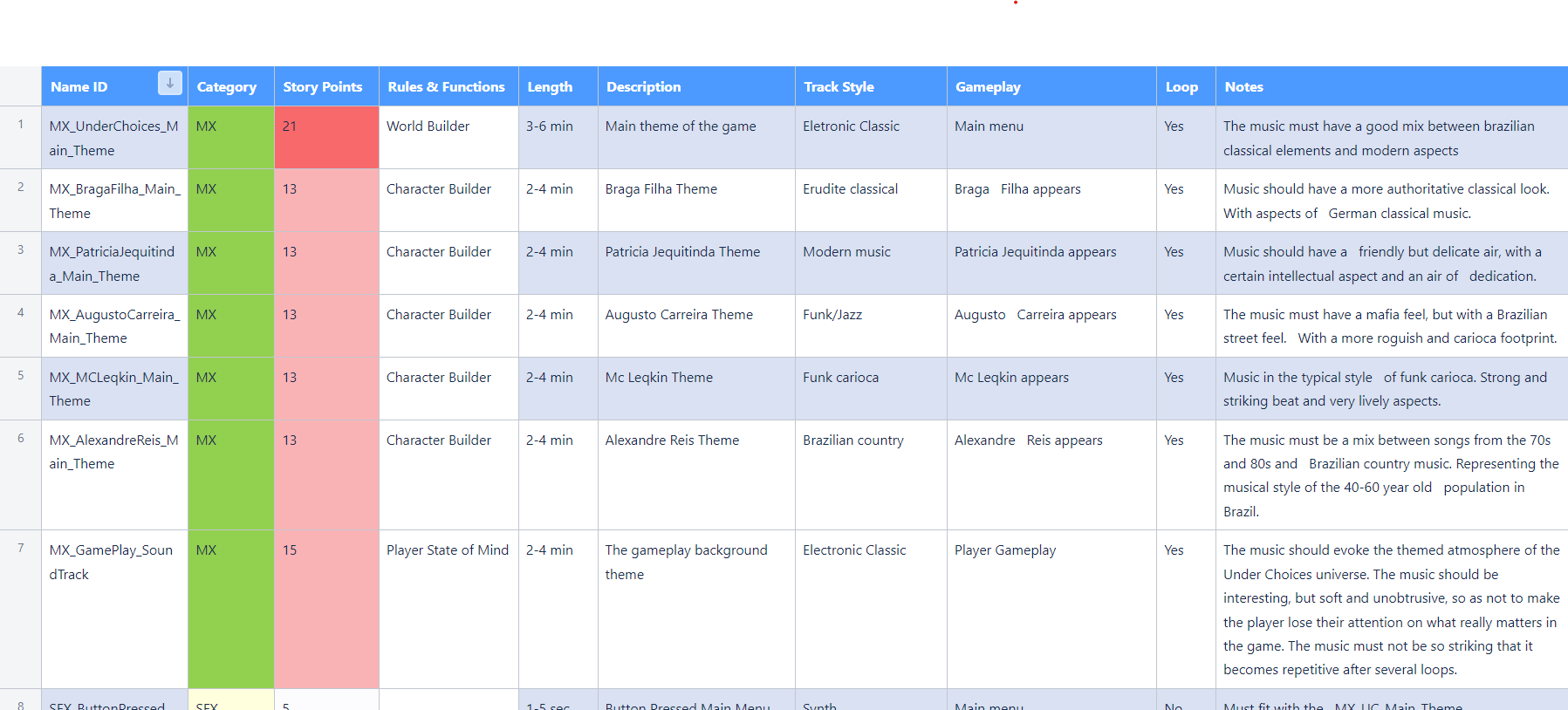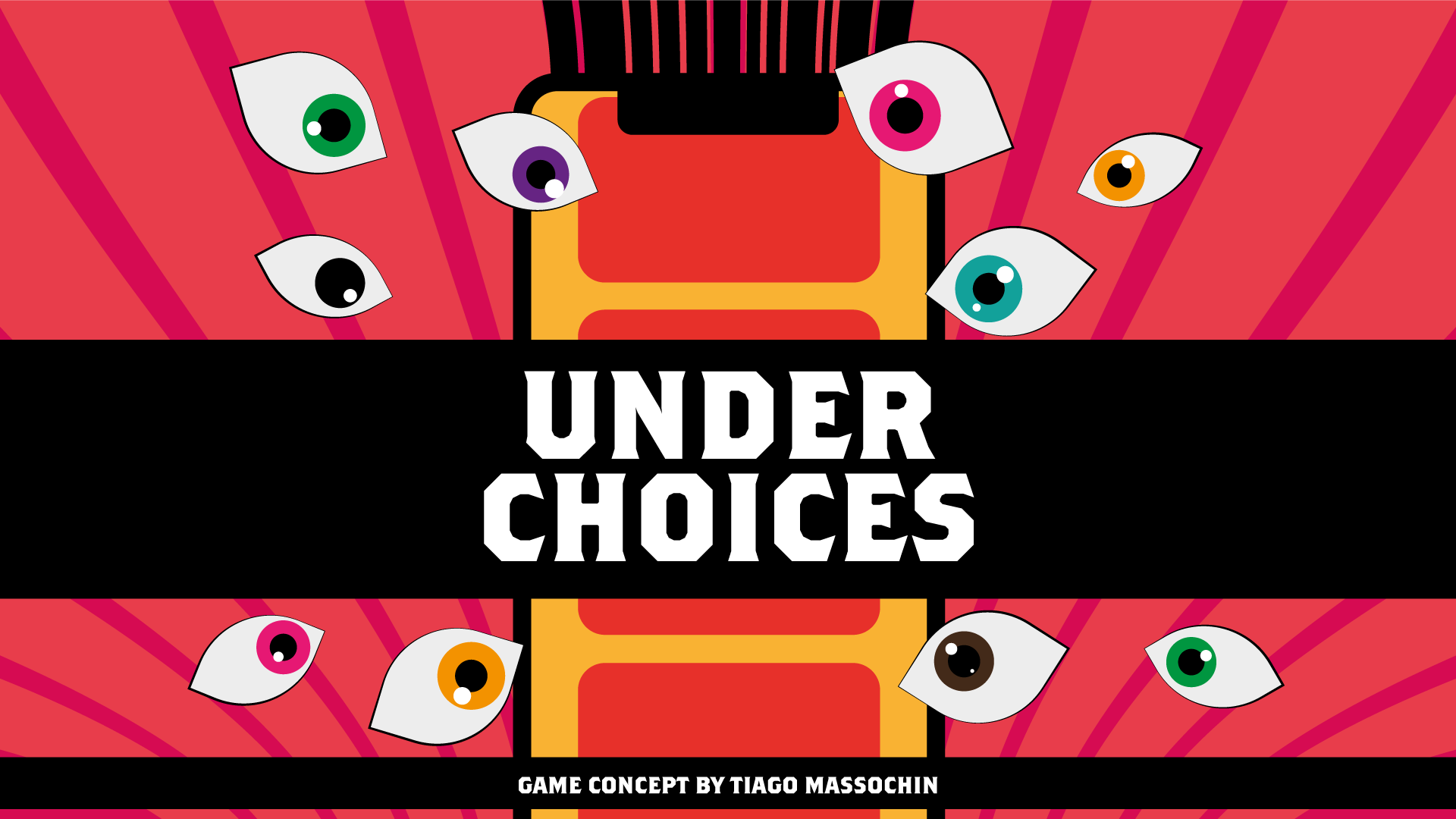Who controls the present controls the future
Since the end of last year, I've been focusing on the pre-production development of the sound design aspects of our project.
As one of my duties is developing the sound part of Under Choices, it is vitally important that the project has a pre-preparation to guarantee that everything is in sync with the team and that we will not encounter any unexpected problems along the way.
Nothing is created, everything is transformed
Due to the Brazilian and fictional theme of Under Choices, one of the things I found most important to do during this pre-production was an in-depth research on the musical genres that match the project (either by the theme or by the Brazilian culture).

That is important to make our game's musical aesthetics as accurate as possible. Because, even though I'm Brazilian, trying to get this topic right based only on guessing is all you need to get wrong.
As the theme of our game involves a dictatorship in a fictional republic inspired by Brazil, my most obvious initial research point was the works of Villa-Lobos. a Brazilian composer, conductor, cellist, pianist and guitarist, described as "the most significant creative figure of the 20th century in Brazilian classical music", and becoming the best-known South American composer of all time. Villa-Lobos had active participation in the Vargas dictatorship in Brazil. And for some reason, classic style is always seen by dictators as something to be enjoyed — a perfect match with our theme.
Likewise, it is impossible to talk about Brazilian music without mentioning Bossa Nova, the first Brazilian genre known internationally. So, why not research the works of the father of bossa nova Antonio Carlos Jobim? Some consider him the greatest genius of Brazilian music. His works helped Brazilian Popular Music (MPB) become known worldwide in the 1960s. One of the 20th century greatest composers, Tom Jobim, along with the poet Vinícius de Moraes, is the author of the most famous Brazilian music in history, the "Girl from Ipanema."
However, I also found it pertinent to bring a current reference to our game, something more modern. For that, I looked for inspiration in funk carioca, mainly in the singer Anitta. Anitta was the singer who remained at the top of iTunes Brazil for the longest time, being elected "Artist of the Year" by the company. She is undoubtedly the best-known singer in Brazil today, making an undeniable success among young people, especially in clubs.
At the end of my research, I ended up with three excellent sources for references, which, when mixed, will undoubtedly create a unique and exciting style for the songs on Under Choices.
Shopping List
Now that I had an idea of what I should do, it was time to define what I'm going to do. For that, I created a list of all the audio assets for our project.
An audio asset list is the most crucial pre-production item in the sound design process. Because it is only with it that estimates can be made, such as deadlines and requirements for sound design.

Some key elements that should be included in an audio assets list are the ID of the files (always use a naming convention to avoid conflicts), the category of each audio file (such as Music, Sound effect, Foley, Dialogues etc.), which are the roles and rules about these assets and a description about them.
As I'm on both the design and sound teams of our project, it wasn't necessary to go very deep into the details of each asset (since I already know that). Otherwise, an in-depth detail of each of them is always welcome.
And obviously, an audio asset list is an organic list. There is no problem if new assets need to be added or if some of them will not be used. The idea here is not to have a fixed and immutable list but to estimate how much work will be put into the project. Changes to this list are more than expected.
Getting ready for the show
Now that I know what I'm going to do, I need to define how I will do it. For this, a good idea is to create a sound palette list.
A sound palette is a list of all the elements that I will use during the production of our game's sounds. And having that already defined during pre-production is very important.
The last thing you want to do during the production of a project is discovering that you don't have the tools to complete it, and a sound palette list goes a long way in ensuring, in pre-production, that this won't happen later.
With a sound palette defined, you can also use pre-production time to ensure that all items in the list are working as expected, making sure that everything is ready to go and you won't have any problems in the future.

However, one of the things that a sound palette helps the most, at least for me, is creating a virtual limitation. It may not seem like, but currently, it is extremely easy and free for anyone to access thousands of virtual instruments. This abundance of options, while great, can cause some setbacks.
When I started working with sound design, one of the most common things I did was spend a good few hours (a time I should have been producing) choosing which VST I would use, without being able to decide which of the thousands of instruments was the one that sounds the best. This breadth of options can also affect your creativity because the first moment you don't like how something is turning out, it seems much easier to change everything rather than try to fix it, which can affect the depth and involvement with the project.
A good sound palette prevents these problems from happening, and it can also be an excellent way to gauge how well you know your gear. Obviously, you shouldn't stick with it if things aren't working out, but if you can do that, it's suitable proof that you know what you're doing.
Get Under Choices
Under Choices
You are the new ruler of doomscrolling
| Status | In development |
| Authors | Zizo Mass, FarrylC, mptunney, Subject194, wilsonchan |
| Genre | Visual Novel, Interactive Fiction, Puzzle, Simulation |
| Tags | 2D, Atmospheric, brazil, First-Person, Multiple Endings, political, Singleplayer |
| Languages | English |
More posts
- Beta LawApr 05, 2022
- Last assaultMar 27, 2022
- Confidential ExperimentsFeb 26, 2022
- The user is always rightFeb 12, 2022
- Strategy and Tactics for ControlNov 27, 2021
- Users are the Heart of a NationNov 13, 2021
- Government Espionage: Analysis of SimilarsOct 21, 2021
- Taking South America!Oct 02, 2021
- A cultural history of fear seekingSep 24, 2021

Leave a comment
Log in with itch.io to leave a comment.